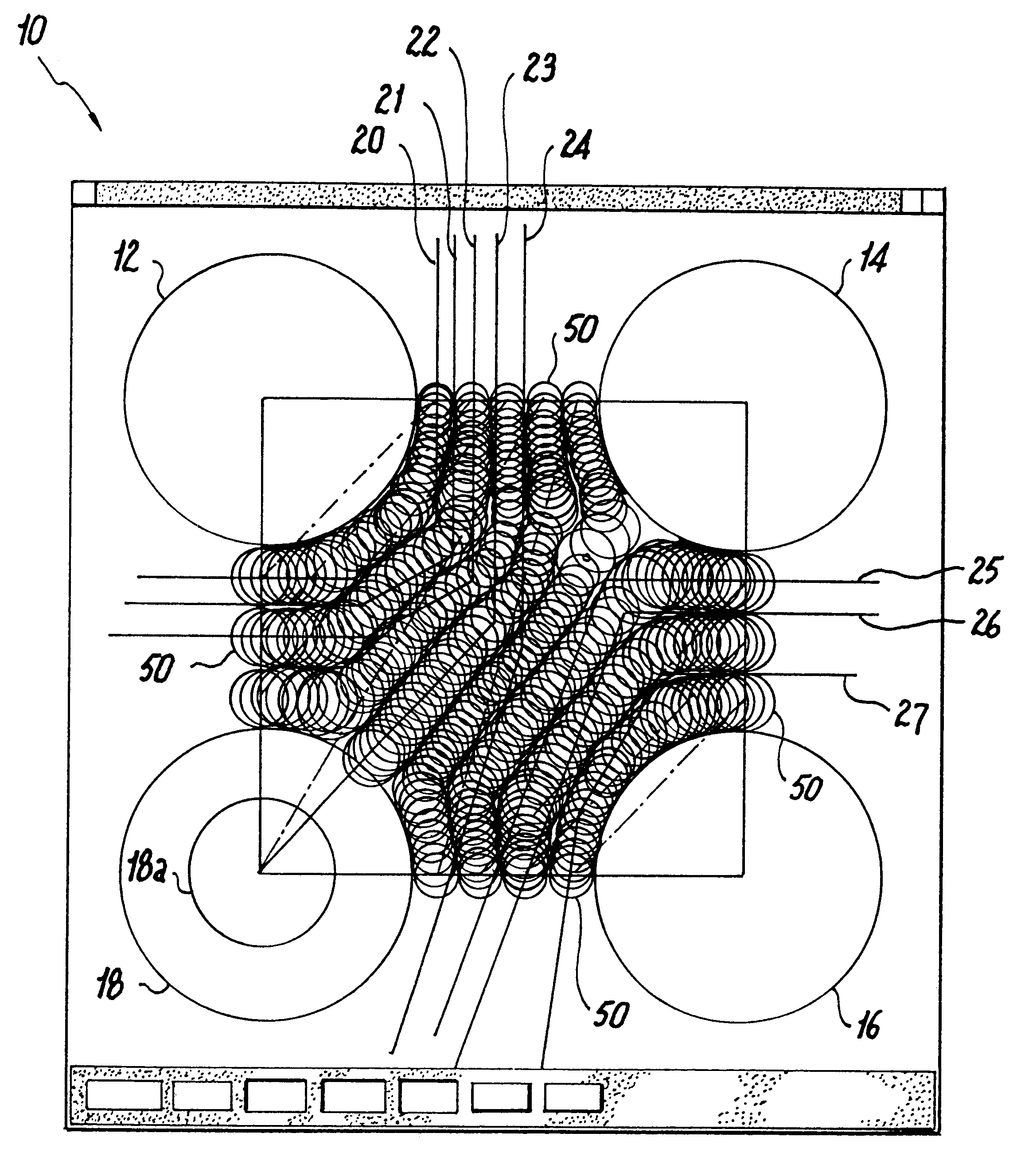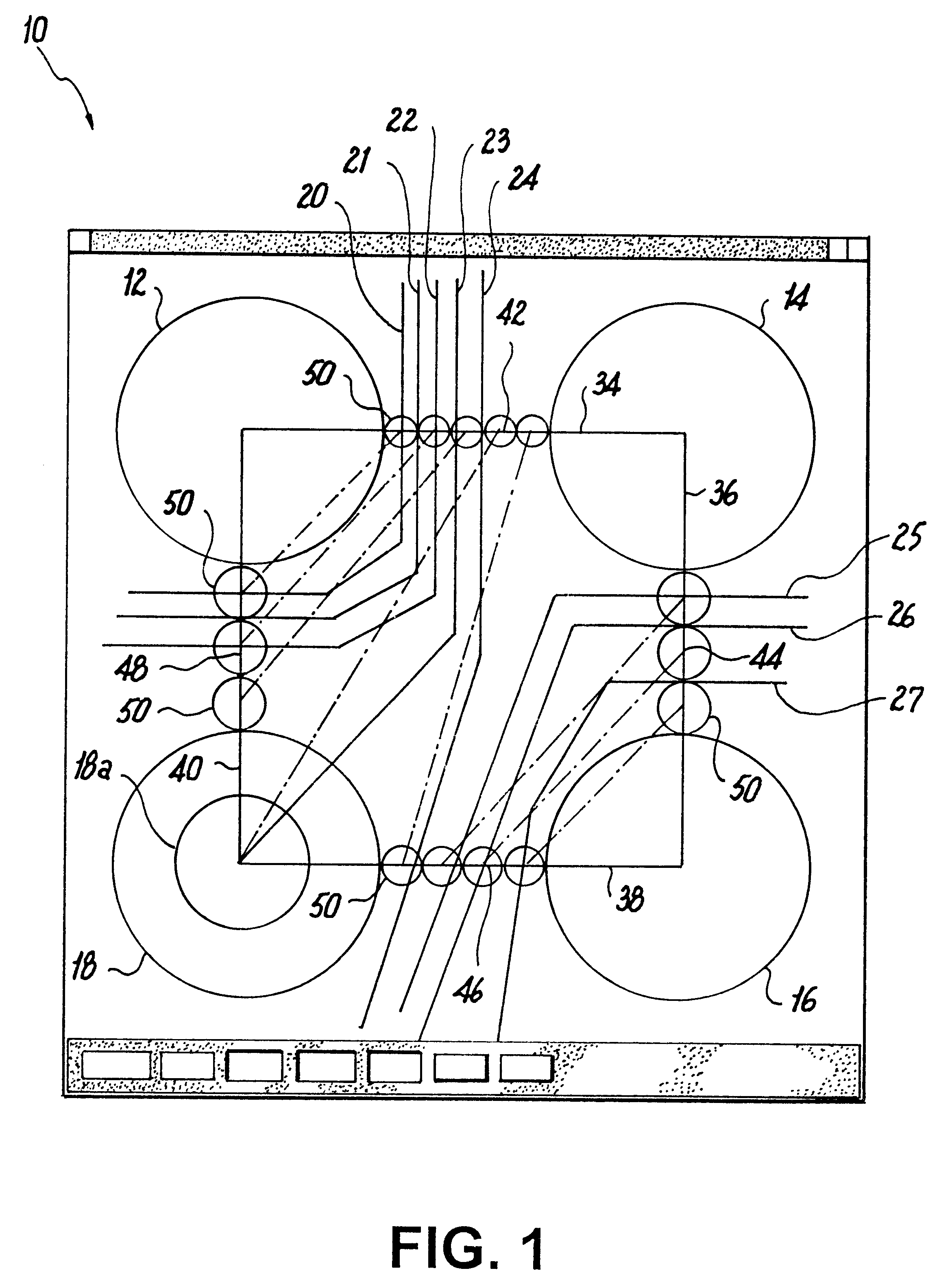Optimization of printed wire circuitry on a single surface using a circle diameter
a printed wire circuit and circle diameter technology, applied in the field of routing and sizing of printed wire circuitry, can solve the problems of not addressing itself to the problem of obtaining optimized printed wire width, not addressing itself to the optimization of wire width and spacing, and not addressing the optimization of spacing between conductors
- Summary
- Abstract
- Description
- Claims
- Application Information
AI Technical Summary
Benefits of technology
Problems solved by technology
Method used
Image
Examples
Embodiment Construction
Referring now in specific detail to the drawings, as illustrated in FIG. 1 there is shown a computer representation of a surface 10 which may be considered to be the area of a semiconductor device. Arranged within the surface are a plurality of lands 12, 14, 16 and 18, or other regions which; for example, may be pads 18a for ballgrid arrays (BGAs) which are to be either interconnected by printed wire circuitry, or which form boundaries for passages for the routing of wires therebetween and to provide for suitable wire interconnections.
The algorithm for implementing the optimized routing of circuitry wires which are to be imprinted on the surface may be implemented by detecting where suitable guidelines 20, 21, 22, 23, 24 intersect first border portion 34 of an imaginary border box which is formed as a positioning connection between the various lands or wire paths.
Guide lines 25, 26, 27 intersect a second border portion 36, with all of the above guide lines being plotted to angularly...
PUM
 Login to View More
Login to View More Abstract
Description
Claims
Application Information
 Login to View More
Login to View More - R&D
- Intellectual Property
- Life Sciences
- Materials
- Tech Scout
- Unparalleled Data Quality
- Higher Quality Content
- 60% Fewer Hallucinations
Browse by: Latest US Patents, China's latest patents, Technical Efficacy Thesaurus, Application Domain, Technology Topic, Popular Technical Reports.
© 2025 PatSnap. All rights reserved.Legal|Privacy policy|Modern Slavery Act Transparency Statement|Sitemap|About US| Contact US: help@patsnap.com



